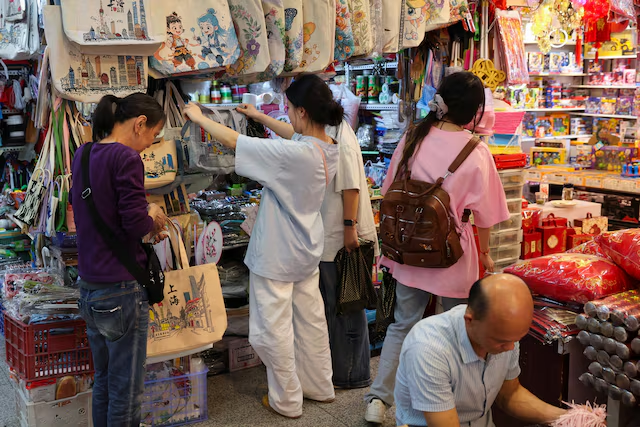China’s ‘New Economy’ Shines Despite Clouded Growth Outlook

As China faces slowing growth, its technology-driven “intelligent economy” and emerging consumption trends are helping cushion the downturn. But sustaining momentum will require more targeted government policies.
In the first half of the year, Beijing appeared on track to hit its 2025 growth target of 5%, with GDP expanding 5.4% and 5.2% in the first two quarters. Since then, however, momentum has weakened. China’s August activity report underscored the slowdown, highlighting declines in retail sales and industrial output.
Even so, several bright spots remain—many linked to Beijing’s ongoing policy support. China’s push to strengthen its “intelligent economy”—including artificial intelligence, semiconductors, and advanced manufacturing—has helped information technology and business services outpace other sectors since early 2024. The trend is expected to continue, as China invests heavily in industrial and humanoid robots to boost productivity. More than half the world’s industrial robots installed over the past three years were in China.
Targeted policies have also supported retail sales, which saw modest growth in the first eight months of 2025. Household appliances, furniture, communications, and office equipment—among the fastest-growing retail categories—benefited from a government “trade-in” scheme introduced in late 2024. Yet some policies have had the opposite effect: Beijing’s anti-extravagance campaign, reaffirmed in May, has weighed on restaurants, alcohol, and catering since June.
Shifting Consumer Preferences
Another growth driver—likely to continue—is the shift in consumer tastes. Chinese millennials and Gen Z are gravitating toward products and services that encourage social engagement, blend tradition with modernity, and integrate AI or other digital technologies.
This “new consumption” wave has fueled sales of Pop Mart’s Labubu dolls, Chagee’s tea houses inspired by Chinese opera, and Laopu Gold jewelry rooted in traditional craftsmanship. Pop Mart’s rising profit margins stand out, especially against a largely stagnant consumer goods sector, suggesting that innovative products and services in China can break out of their categories.
Demographic shifts are also shaping new markets. The “silver economy”—spanning smart-home technology, elderly care services, pension plans, and specialized healthcare products—is estimated at $1 trillion in 2024 and projected to quadruple by 2035, according to China’s State Council Information Office.
Despite these positive trends, they are not enough to offset weakness in manufacturing, construction, and real estate. Meanwhile, growing resistance to Chinese exports in Western markets underscores the urgency of boosting domestic consumption.
Policymakers are already expanding their toolkit. Recognizing that stronger employment is essential to lift consumer sentiment, Beijing has begun offering targeted support to small and medium-sized enterprises. Measures under consideration include subsidizing social insurance contributions to encourage hiring and providing vocational training to upskill workers. With more than a third of China’s workforce made up of migrant laborers, easing residency (hukou) restrictions has also been suggested, which could link social benefits to actual work location rather than household registration—stimulating spending at lower income levels.
Reviving positive wealth effects could help as well. With property—accounting for 60% of household wealth—still in a prolonged slump, regulators are exploring ways to encourage domestic investment in equities, signaling tacit support for a “slow bull market.”
Transitioning to a truly consumption-led economy will be a long and complex process, fraught with risks. But sustained investment in advanced industries, innovation in products and services, and agile policymaking could provide a resilient foundation.

Continuing the achievement of the journey of effectiveness and credibility of more than 10 years in the career of journalism, as a woman journalist, I am Serving as the founder, promoter and editor of DiaryTimes with the trust and support of all. My credible coverage may not have given a big shape to the numbers, but my journey presents articles that make you aware of the exact and meaningful situations of Himachal’s politics, ground issues related to the public, business, tourism and the difficult geographical conditions of the state and financial awareness. DiaryTimes, full of the experience of my precise editorial expertise, is awakening the flame of credible journalism among all of you, so that the eternal flame of meaningful change can be lit in the life of the people of the state and the atrocities being committed against the people can be brought to the fore, I am motivated for that. If even a small change comes with the power of my journalism and the whole world becomes a witness to that issues, then I will consider myself fortunate.





